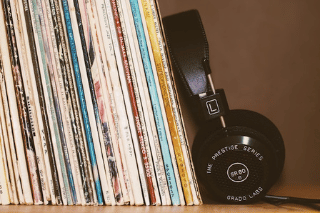Introduction
The 1970s was a remarkable era for music, with influential artists and bands shaping the landscape of popular culture. Beyond the music itself, album covers became an integral part of artistic expression and storytelling. From psychedelic designs to iconic photography, 1970s album art encapsulated the spirit of the era. In this blog post, we will dive into the captivating world of 1970s album art and explore the artists, designs, and cultural significance behind these visual masterpieces.
The Rise of Visual Storytelling
In the 1970s, album art evolved from a mere protective casing to a powerful storytelling medium. Artists recognized the potential to visually convey their music’s essence and create a deeper connection with their audience. Elaborate designs and intricate details became the norm, as musicians sought to captivate listeners even before they played a single track.
Iconic Artists and Their Artistic Visions
The 1970s introduced us to some of the most influential artists in music history, and their album covers reflected their unique artistic visions. The likes of Pink Floyd, Led Zeppelin, David Bowie, and The Rolling Stones pushed the boundaries of creativity, collaborating with talented designers and photographers to bring their ideas to life. Each album cover became a work of art in its own right, leaving an indelible mark on popular culture.
Exploring Different Design Styles
The 1970s witnessed a diverse range of design styles in album art. One prominent style was the use of vibrant and psychedelic imagery, reflecting the counterculture movement of the time. Bands like Jefferson Airplane and Santana embraced these bold and trippy designs, creating album covers that were visually stunning and mind-altering.
Another prevalent style was the use of photography, often capturing candid moments or conveying a specific mood. Artists like Bob Dylan and Joni Mitchell opted for more intimate and personal album covers, showcasing their individuality and authenticity.
The Cultural Significance of 1970s Album Art
Beyond their artistic appeal, 1970s album covers played a significant role in shaping the cultural landscape of the time. They became symbols of rebellion, self-expression, and social commentary. Artists used their album art to address political issues, challenge societal norms, and promote cultural movements. The album cover of “London Calling” by The Clash, for example, is an iconic image of punk rock rebellion, evoking a sense of urgency and dissent.
The Legacy and Influence on Contemporary Art
The impact of 1970s album art extends far beyond that era, continuing to inspire artists and designers today. Its influence can be seen in various art forms, from graphic design to fashion and even street art. The fusion of music and visual art in album covers has become a timeless concept, showcasing the power of collaboration and creative expression.
Conclusion
The 1970s was a golden age for album art, where visuals became an essential part of the music experience. Each album cover told a story, capturing the essence of the music and the spirit of the times. From psychedelic designs to iconic photography, 1970s album art pushed the boundaries of creativity and left an indelible mark on popular culture.
Aspiring artists and designers can draw inspiration from the vibrant world of 1970s album art, exploring different styles and techniques to create their own visual masterpieces. Whether it’s through graphic design, photography, or mixed media, the legacy of 1970s album art continues to inspire and captivate audiences across generations.
So, let us embrace the nostalgia and immerse ourselves in the captivating world of 1970s album art, where music and visuals intertwine to create timeless works of art.
Key Takeaways:
- The 1970s marked a significant era for album art, where visuals became an integral part of the music experience.
- Iconic artists like Pink Floyd, Led Zeppelin, David Bowie, and The Rolling Stones pushed the boundaries of creativity, collaborating with talented designers and photographers.
- Diverse design styles, such as vibrant psychedelia and intimate photography, emerged during this time, reflecting the counterculture movement and individuality of artists.
- 1970s album art played a crucial role in shaping the cultural landscape, addressing political issues, challenging societal norms, and promoting cultural movements.
- The influence of 1970s album art continues to inspire contemporary artists and designers across various art forms.
If you are passionate about the intersection of music and visual art, consider furthering your knowledge with the “NYU x Billboard | Music Industry Essentials” online course and certificate program offered by Yellowbrick. This comprehensive program will provide you with valuable insights into the music industry and its visual aspects, helping you develop the skills to create captivating album art that resonates with audiences. Embrace your creativity and embark on a journey to make your mark in the world of music and art.








